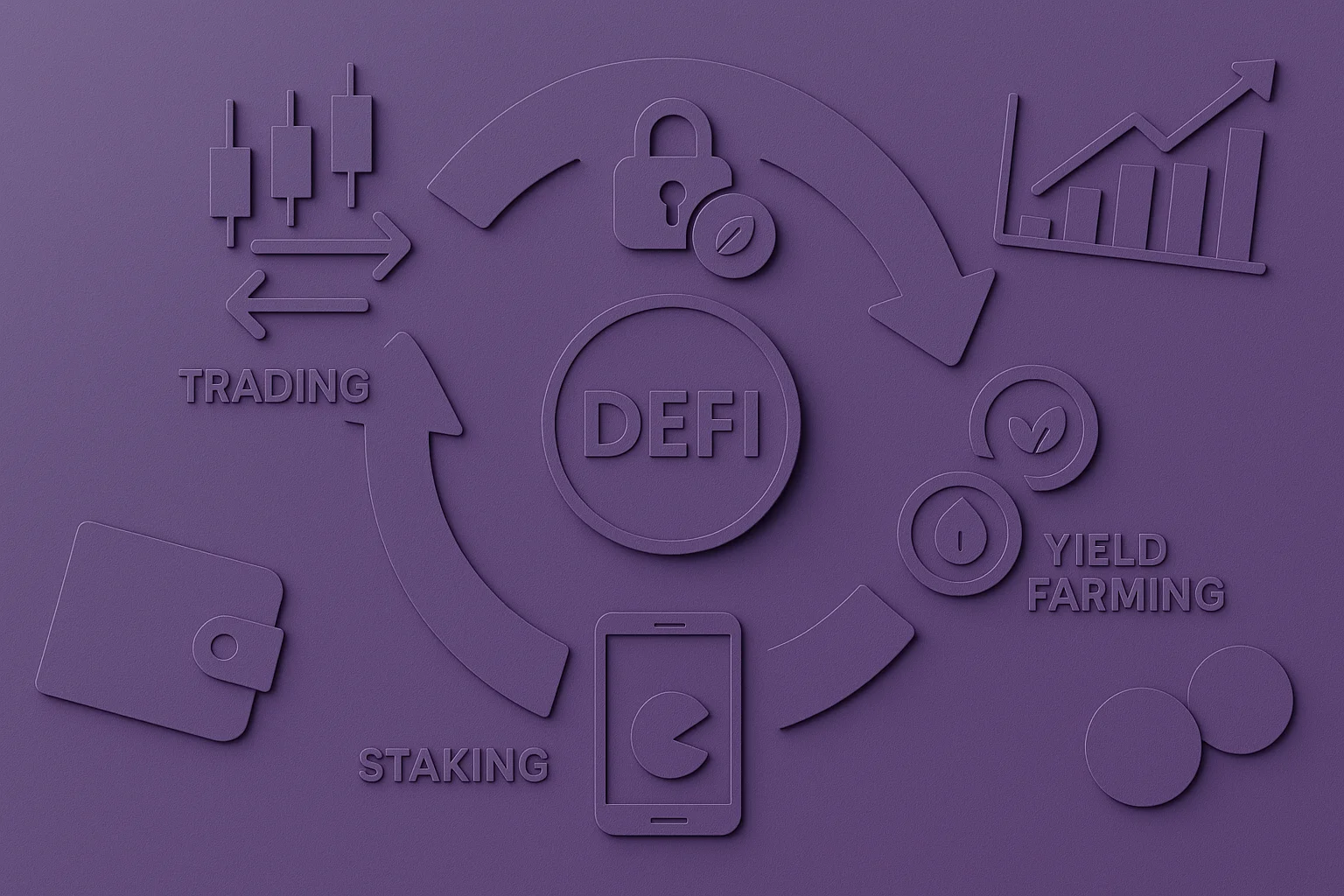What Is Volume vs. Market Cap and How Do They Impact You?
Once you become part of the crypto movement, one thing becomes clear: a token’s market price will always be highly influenced by its market capitalization and trading volume. But why is volume vs. market cap important and useful? How do they impact the market? And what are the main differences between the two concepts? […]

Once you become part of the crypto movement, one thing becomes clear: a token’s market price will always be highly influenced by its market capitalization and trading volume. But why is volume vs. market cap important and useful? How do they impact the market? And what are the main differences between the two concepts?
Let’s find answers to all these questions and get one step closer to being the crypto traders who can complete transactions without hesitation!
Volume vs. Market Cap at a Glance
| Trading Volume | Market Cap | |
| Purpose | Reflects the overall activity of the market | Showing how stable a coin is |
| Formula | The number of tokens traded over a set period | Market cap = Price * Circulating Supply |
| Impact on Price | Low volume – High price High volume – Low price | Higher market cap – Higher popularity – High price |
Volume vs. Market Cap: What Are They?
In the crypto space, volume refers to the total amount of a specific cryptocurrency traded over a certain period, typically within 24 hours or 7 days.
Volume tells us more about the buying and selling activity of a specific token or coin and can reflect how popular or in-demand it is among traders. Market cap shows a cryptocurrency’s overall value. To calculate the market capitalization, you must multiply the current market price of a single coin by its total circulating supply.
For example, if a cryptocurrency costs $10 per coin and has 1 million coins in circulation, its market cap would be $10 million. Thus, market cap is often used to classify cryptocurrencies into three main categories:
- Large-cap: Established cryptocurrencies with market caps exceeding billions of dollars, like Bitcoin and Ethereum. These are generally considered more stable investments.
- Mid-cap: Cryptos with market caps in the hundreds of millions. These coins have potential for growth but come with moderate risk.
- Small-cap: Cryptos with smaller market caps, typically below $100 million. They may have higher growth potential but are often more volatile.
Volume vs. Market Cap: The Impact
Although volume and market capitalization may measure different things, they are closely interconnected, especially regarding market sentiment.
A spike in trading volume often signals increased interest in a coin, which can drive the price and lead to a high market cap. However, it can also work the other way around: a drop in the volume market may mean less interest, possibly causing the price and market cap to fall.
You can better understand a cryptocurrency’s price stability when analyzing volume and market cap together.
Market Cap vs. Volume Crypto Ratio
The volume-to-market-cap ratio analyzes trading activity concerning a cryptocurrency’s total value.
A high volume-to-market-cap ratio could indicate much trading interest relative to the coin’s market value, possibly signaling that traders actively engage with that asset. A lower ratio might suggest less trading activity, which could mean limited liquidity or investor interest.
For instance, a newly launched coin might experience a high volume relative to its market cap as investors rush to buy in early. If the volume-to-market-cap ratio continues to grow, it could mean consistent demand. But if the volume dips, the coin’s price (and market cap, automatically) might become more volatile.
Factors Affecting Volume vs. Market Cap
Several external and internal factors can impact a cryptocurrency’s volume and market cap. Each situation may be different, but the main factors can include:
- Market sentiment: Positive or negative news, media coverage, or social media hype can influence investor interest. Positive sentiment may boost volume and market cap, while negative sentiment can decrease both.
- Supply and demand: Basic economic principles apply. When demand for a token is high, the volume increases, and the price may rise, raising the market cap. Lower demand tends to have the opposite effect.
- Market conditions: Broad market trends, like bull or bear markets, affect both volume and market cap. In a bull market, volume and market cap often increase as more investors make trades. In a bear market, you may experience low market cap and price as interest wanes.
- Regulatory news: Government policies and regulations impact the crypto market significantly. Favorable regulations may boost volume and market cap as investors gain confidence, while strict regulations can have the opposite effect.
Tips and Tricks to Make the Best Out of Volume and Market Cap
Volume and market cap can give investors an edge in the crypto market. So, how do we analyze these metrics correctly?
- Track the volume-to-market-cap ratio: By observing this ratio, you can spot trends in trading interest versus the total market value. Consistently high volume relative to the market cap could indicate strong trading interest, reflecting good liquidity.
- Consider the market cap size: Large-cap cryptocurrencies often provide stability, whereas small-cap tokens can be more volatile but offer greater growth potential. Decide on a cap range based on your risk tolerance. You can also choose more if that works for your portfolio. All that matters is that you are informed before making investment decisions.
- Monitor volume trends: Increasing volume over several days can signal a trend, whether it’s upward (more buying interest) or downward (more selling pressure).
- Stay updated on market news: Stay current on industry developments, regulatory news, and the overall market sentiment. Any new event in the crypto space can affect the current price of a certain coin or token.
FAQ
Volume often affects price, which in turn directly impacts market capitalization. Therefore, volume can significantly impact the overall value of a cryptocurrency.
Not always. While high volume relative to market capitalization can indicate strong trading activity, other factors, such as investor sentiment and liquidity, must also be considered to understand the asset’s stability fully.
If trading volume significantly exceeds the market capitalization, it can signal unusual trading interest, which may lead to rapid price fluctuations. A high volume-to-market cap ratio may be a short-term trend, and prices can stabilize or decline once trading activity decreases.
Final Thoughts
Both volume vs. market cap are basic metrics for understanding a cryptocurrency’s condition and potential. Considering these metrics, you can better analyze a coin’s trading interest, liquidity, and market value.
So, with all of these in mind, may you have a positive trading experience!



